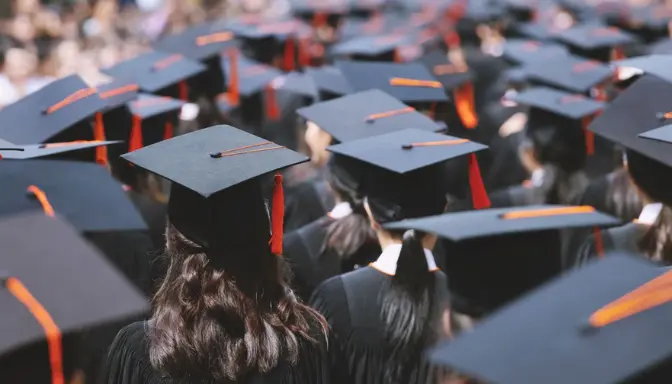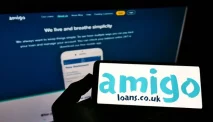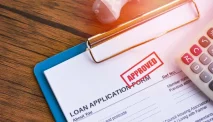Diksia.com - Student loan debt is a major issue for many Americans, especially in the wake of the Covid-19 pandemic that has disrupted the economy and the education system. According to the latest data from the Department of Education, there are more than 45 million federal student loan borrowers who collectively owe $1.6 trillion. Many of these borrowers struggle to make their monthly payments, face high interest rates, and have limited options for forgiveness or cancellation.
President Joe Biden has made student loan relief one of his priorities since he took office in January 2021. He has extended the payment pause and interest waiver on federal student loans until June 2023, launched a new income-driven repayment plan called SAVE, and approved nearly $132 billion in debt cancellation for more than 3.6 million borrowers who qualify for various programs.
In this article, we will explain the main features of Biden’s student loan plan, who can benefit from it, and how to apply for it. We will also discuss some of the challenges and criticisms that the plan faces, and what the future may hold for student loan borrowers under the Biden administration.
Payment Pause and Interest Waiver
One of the first actions that Biden took as president was to extend the payment pause and interest waiver on federal student loans that was initiated by former President Donald Trump in March 2020 due to the Covid-19 crisis. This means that most federal student loan borrowers do not have to make any payments or accrue any interest on their loans until June 30, 2023. This relief applies to Direct Loans, FFEL Program loans owned by the Department of Education, and Perkins Loans owned by the Department of Education. It does not apply to private student loans or FFEL Program loans or Perkins Loans owned by other entities.
The payment pause and interest waiver is intended to provide financial relief and flexibility to borrowers who may have lost their income, faced increased expenses, or experienced other hardships due to the pandemic. It also allows borrowers to save money on interest and use their funds for other purposes, such as paying off other debts, building an emergency fund, or investing for the future. Additionally, the payment pause and interest waiver counts toward the required number of payments for forgiveness programs, such as Public Service Loan Forgiveness (PSLF) and income-driven repayment (IDR) forgiveness.
To benefit from the payment pause and interest waiver, borrowers do not need to take any action, as it is automatically applied to their eligible loans. However, borrowers who want to continue making payments can do so, and their payments will go toward reducing their principal balance, which can lower their future interest costs and shorten their repayment term. Borrowers who want to opt out of the payment pause and interest waiver can contact their loan servicer and request to resume their payments.
SAVE Plan
Another initiative that Biden launched in July 2021 is the Saving on a Valuable Education (SAVE) plan, which is a new income-driven repayment plan for federal student loan borrowers. The SAVE plan is designed to make student loan payments more affordable and manageable, especially for low- and middle-income borrowers.
The SAVE plan reduces the percentage of personal income that borrowers must pay each month toward their student loan debt. The current IDRs for undergraduate loans calculate that borrowers pay 10% of income above 225% of the poverty line, but the SAVE plan will cut that to 5%. For example, a single borrower with an adjusted gross income of $40,000 and a loan balance of $25,000 would pay $93 per month under the SAVE plan, compared to $186 per month under the current IDR plans. The SAVE plan also prevents balances from growing because of unpaid interest, by capping the interest accrual at 50% of the original loan amount.
The SAVE plan also offers forgiveness of the remaining balance after 20 years of qualifying payments for undergraduate loans, or 25 years for graduate loans. The forgiven amount is not taxable, unlike under the current IDR plans. The SAVE plan also has a streamlined application process, which allows borrowers to enroll online or by phone, without submitting income documentation or annual recertification.
To qualify for the SAVE plan, borrowers must have Direct Loans that are not in default, and must have a partial financial hardship, which means that their standard 10-year repayment amount exceeds their SAVE plan amount. Borrowers who are already enrolled in an IDR plan can switch to the SAVE plan, but they will lose any progress they have made toward forgiveness under their previous plan. Borrowers who are interested in the SAVE plan can apply online at StudentAid.gov/save or by calling their loan servicer.
Debt Cancellation
The most significant and controversial aspect of Biden’s student loan plan is the debt cancellation for certain groups of borrowers who meet specific criteria. Since he took office, Biden has approved nearly $132 billion in debt cancellation for more than 3.6 million borrowers, through various programs and policies. These include:
- $53.5 billion for almost 750,000 borrowers who work in public service and qualify for PSLF. This includes borrowers who have benefited from a limited PSLF waiver that allows them to count payments made on any type of federal loan or repayment plan toward the 120 required payments for forgiveness. It also includes borrowers who have received regulatory improvements to the PSLF program, such as expanded eligibility, simplified application, and enhanced customer service.
- $44 billion for nearly 901,000 borrowers who are enrolled in an IDR plan and qualify for IDR forgiveness. This includes borrowers who have received fixes to IDR that provide them with an accurate count of progress toward forgiveness and address longstanding concerns with misuse of forbearance.
- $9 billion for 125,000 borrowers who attended schools that engaged in fraud or misconduct and qualify for borrower defense to repayment. This includes borrowers who have received a streamlined approval process, a full discharge of their loans, and a refund of any payments they have made.
- $8.7 billion for 323,000 borrowers who have a total and permanent disability and qualify for disability discharge. This includes borrowers who have received an automatic discharge of their loans based on data from the Social Security Administration or the Department of Veterans Affairs, without requiring any application or income monitoring.
- $5.8 billion for 442,000 borrowers who attended schools that closed and qualify for closed school discharge. This includes borrowers who have received an automatic discharge of their loans if they did not enroll in another school within three years of their school’s closure, without requiring any application or transfer of credits.
- $1.5 billion for 92,000 borrowers who are recipients of Pell Grants and qualify for partial cancellation of their loans. This includes borrowers who have received $10,000 of debt relief for each academic year they received a Pell Grant, up to a maximum of $20,000.
Biden has said that he supports canceling $10,000 of student debt for all borrowers as part of a Covid-19 relief package, but he has not taken any executive action to do so, citing legal and policy challenges. He has also said that he supports canceling up to $50,000 of student debt for borrowers who earn less than $125,000, but he has asked the Department of Justice and the Department of Education to review his authority to do so. He has also called on Congress to pass legislation to enact more comprehensive and permanent student debt relief.
Challenges and Criticisms
Biden’s student loan plan has faced several challenges and criticisms from different stakeholders, including borrowers, advocates, lawmakers, and courts. Some of the main issues are:
- The Supreme Court decision that struck down Biden’s original student debt relief plan, which would have canceled $10,000 of student debt for all borrowers who earn less than $125,000, regardless of their loan type or repayment plan. The court ruled that the plan violated the equal protection clause of the Constitution, as it discriminated against borrowers who earn more than $125,000, who have private student loans, or who are not enrolled in an IDR plan. The court also ruled that the plan exceeded Biden’s executive authority, as it did not have a clear statutory basis or a rational connection to the Covid-19 crisis. The decision forced the Biden administration to pursue an alternative path to debt relief through negotiated rulemaking under the Higher Education Act, which is expected to take several months and face legal challenges.
- The backlash from borrowers who are excluded from or dissatisfied with Biden’s student loan plan, especially those who do not qualify for any of the debt cancellation programs, who have private student loans, who have already paid off their loans, or who have higher loan balances or incomes. These borrowers have expressed frustration, anger, and disappointment with Biden’s plan, as they feel that it is unfair, inadequate, or ineffective. They have also demanded more transparency, accountability, and communication from the Biden administration and the Department of Education regarding the implementation and impact of the plan.
- The pressure from advocates and lawmakers who are pushing for more ambitious and universal student debt relief, especially those who support canceling $50,000 of student debt for all borrowers by executive action. These advocates and lawmakers have argued that Biden’s student loan plan is too limited, too complicated, and too slow, and that it does not address the root causes of the student debt crisis, such as the rising cost of college, the lack of state and federal funding, and the predatory practices of for-profit schools and loan servicers. They have also claimed that canceling $50,000 of student debt would stimulate the economy, reduce racial and gender wealth gaps, and improve the lives of millions of Americans.
- The uncertainty and confusion among borrowers who are unsure about how to navigate the complex and changing student loan landscape, especially those who are approaching the end of the payment pause and interest waiver, who are eligible for multiple debt cancellation programs, or who have questions about their loan status, balance, or servicer. These borrowers have reported difficulties in accessing accurate and timely information, guidance, and support from the Department of Education and the loan servicers, as well as technical glitches and errors in the online systems and tools.
Future Prospects
Biden’s student loan plan is still evolving and expanding, as the administration continues to explore new ways to provide relief and reform to the student loan system. Some of the potential developments that borrowers can expect in the near future are:
- The expansion of the payment pause and interest waiver beyond June 30, 2023, depending on the state of the pandemic and the economy. Biden has indicated that he is open to extending the relief further if needed, but he has not made a final decision yet.
- The implementation of the SAVE plan through negotiated rulemaking, which is a process that involves representatives from the Department of Education, the student loan industry, and the public to develop new regulations for the student loan program. The rulemaking is expected to start in October 2021 and last until April 2022, and the final regulations are expected to take effect in July 2023.
- The review of Biden’s authority to cancel $50,000 of student debt for all borrowers by executive action, which is being conducted by the Department of Justice and the Department of Education. The review is expected to be completed by the end of 2021, and it will determine whether Biden has the legal and constitutional power to enact such a sweeping measure without congressional approval.
- The passage of legislation to cancel $10,000 of student debt for all borrowers as part of a Covid-19 relief package, which is being proposed by some Democrats in Congress. The legislation is expected to face opposition from some Republicans and moderate Democrats, who argue that it is too costly, too broad, or too unfair to other taxpayers.
- The introduction of other reforms and initiatives to improve the student loan system, such as increasing the Pell Grant, simplifying the FAFSA, expanding the eligibility and benefits of PSLF, strengthening the oversight and accountability of for-profit schools and loan servicers, and creating a new student loan ombudsman.
Conclusion
Biden’s student loan plan is one of the most ambitious and comprehensive efforts to address the student debt crisis in the history of the United States. It aims to provide relief, forgiveness, and affordability to millions of borrowers who are struggling with their student loans, especially in the wake of the Covid-19 pandemic. However, the plan also faces many challenges and criticisms, as it is limited by legal, policy, and political constraints, and it does not satisfy the demands and expectations of all stakeholders. Therefore, borrowers should stay informed and updated about the latest developments and changes in the student loan landscape, and seek professional advice and assistance if they have any questions or concerns about their student loan situation.






